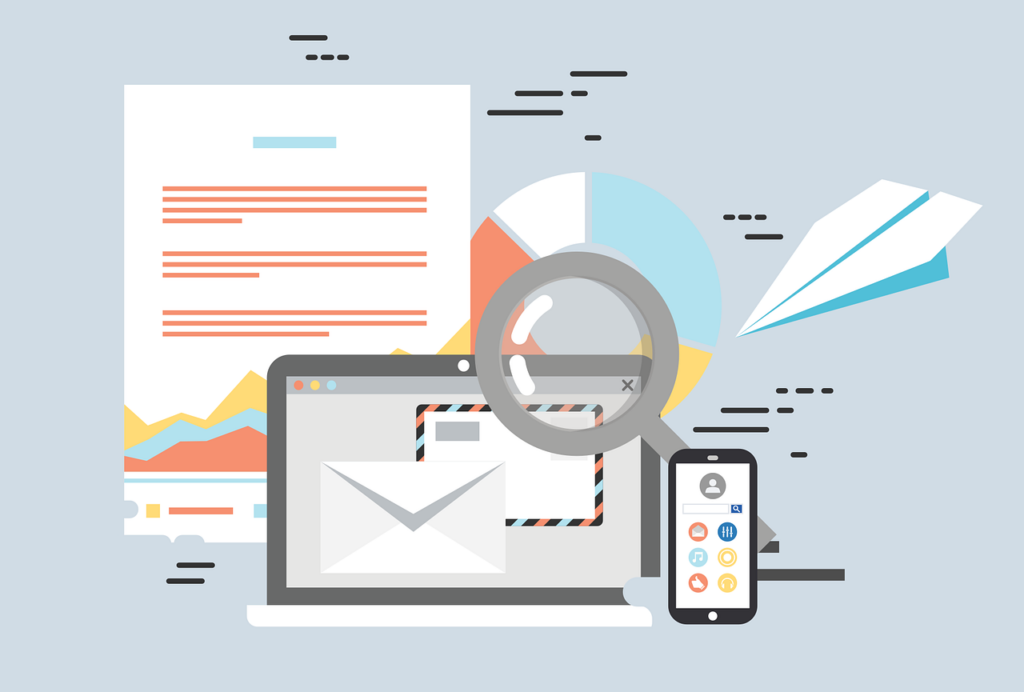While email marketing can be a highly effective tool, it’s essential to avoid common email marketing mistakes that can undermine your efforts and damage your reputation. Making mistakes such as sending irrelevant content, failing to optimize for mobile devices, or not testing your emails before sending can result in lower engagement, higher unsubscribe rates, and lost revenue. In this post, we’ll discuss some of the most common email marketing mistakes and provide tips for avoiding them to improve the success of your email campaigns.
Common Email Marketing Mistakes
Lack of Personalization
One of the biggest email marketing mistakes is failing to personalize your messages. Personalization involves using data to tailor your emails to the individual recipient, such as including their name, location, or previous purchase history. Failing to personalize your emails can result in lower open and click-through rates, as well as lower engagement and conversions. To avoid this mistake, use data to personalize your emails and make them more relevant to each recipient.
Poor Segmentation
Segmentation involves dividing your email list into smaller groups based on factors such as demographics, location, behavior, or interests. Failing to segment your list can result in irrelevant content being sent to subscribers, leading to lower engagement and higher unsubscribe rates. To avoid this mistake, use data to create segments and target each segment with relevant content.
Ineffective Call-to-Action
The call-to-action (CTA) is the part of the email that tells the reader what action to take next, such as “click here to learn more” or “buy now”. Failing to make the CTA clear and compelling can result in low click-through rates and missed opportunities for conversions. To avoid this mistake, use a clear and concise CTA that stands out visually and is relevant to the email content.
Not Optimizing for Mobile Devices
With more and more people using mobile devices to read their emails, it’s essential to ensure that your emails are optimized for mobile viewing. Failing to do so can result in low open and click-through rates, as well as frustration for the reader. To avoid this mistake, use a responsive email design that adapts to the screen size and test your emails on multiple devices.
Not Testing Emails Before Sending
Failing to test your emails before sending them can result in embarrassing email marketing mistakes, such as broken links, typos, or formatting errors. It can also lead to lower engagement and conversions if the email doesn’t display properly on certain devices or in certain email clients. To avoid this mistake, always test your emails thoroughly before sending them to your list.
Subscriber Engagement
Subscriber engagement is a critical component of email marketing success. When subscribers are engaged with your emails, they are more likely to open, click, and convert. Engaged subscribers can also lead to increased brand loyalty and advocacy. Failing to engage your subscribers can result in lower open and click-through rates, higher unsubscribe rates, and lost revenue.
B. Strategies for Increasing Subscriber Engagement
There are several strategies you can use to increase subscriber engagement, including:
- Personalization: Use data to personalize your emails and make them more relevant to each recipient.
- Segmentation: Divide your email list into smaller groups and target each group with relevant content.
- Timing: Send your emails at the right time for your audience, taking into account factors such as time zones and work schedules.
- Frequency: Find the right balance between sending too many and too few emails to make sure your subscribers are manageable.
- Interactive Content: Use interactive content such as quizzes, polls, and surveys to engage your subscribers and gather valuable feedback.
Here are some examples of engaging email content:
- Welcome Emails: Send a welcome email to new subscribers to introduce your brand, set expectations, and provide valuable content.
- Newsletters: Send regular newsletters with updates on your business, industry news, and valuable content that your subscribers will find useful.
- Promotions: Offer exclusive promotions and discounts to your subscribers to incentivize engagement and drive conversions.
- User-Generated Content: Share user-generated content such as customer reviews, photos, or testimonials to build social proof and engage your audience.
- Storytelling: Use storytelling to connect with your subscribers on a personal level and build emotional engagement with your brand.
Deliverability
Email deliverability refers to the ability of your emails to reach your subscribers’ inboxes. Poor deliverability means your emails are filtered by spam filters or blocked by email providers, resulting in lower open and click-through rates and lost revenue.
There are several reasons why your emails might have poor deliverability, including:
- Spam Triggers: Using spam trigger words or phrases in your email subject lines or content can trigger spam filters and cause your emails to be blocked or sent to the spam folder.
- Poor Sender Reputation: Your sender reputation is a score that email providers use to determine the trustworthiness of your emails. A poor sender reputation can result in your emails being filtered or blocked.
- Invalid Email Addresses: Sending emails to invalid or inactive email addresses can result in bouncebacks and damage your sender reputation.
- Lack of Authentication: Failing to authenticate your emails using protocols such as DKIM, SPF, or DMARC can also result in lower deliverability.
Here are some tips for improving email deliverability:
- Use a Trusted Email Service Provider: A reputable email service provider can help improve your sender reputation and ensure your emails are delivered to the inbox.
- Clean Your Email List Regularly: Regularly removing invalid or inactive email addresses from your list can help improve your sender reputation and reduce bouncebacks.
- Avoid Spam Triggers: Use a spam checker tool to identify potential spam trigger words or phrases in your email content and subject lines, and avoid using them.
- Authenticate Your Emails: Authenticate your emails using protocols such as DKIM, SPF, or DMARC to improve your sender reputation and reduce the likelihood of your emails being filtered or blocked.
- Monitor Your Sender Reputation: Monitor your sender reputation using tools such as Sender Score or Barracuda Reputation to identify and address any issues that might be affecting your deliverability.
Conclusion
This article discussed several common email marketing mistakes and strategies for avoiding them. We also explored the importance of subscriber engagement and provided examples of engaging email content. Finally, we discussed email deliverability and provided tips for improving it.
Email marketing can be a powerful tool for reaching and engaging your audience, but it requires careful planning and execution. By avoiding common mistakes, focusing on subscriber engagement, and improving email deliverability, you can increase the effectiveness of your email marketing campaigns and achieve better results.
Always put your subscribers first and provide them with valuable, relevant content. Use data and segmentation to personalize your emails and make them more engaging, and monitor your sender reputation to ensure that your emails are being delivered to the inbox. Following these best practices and continuously testing and refining your approach can create successful email marketing campaigns that drive conversions and build brand loyalty.


